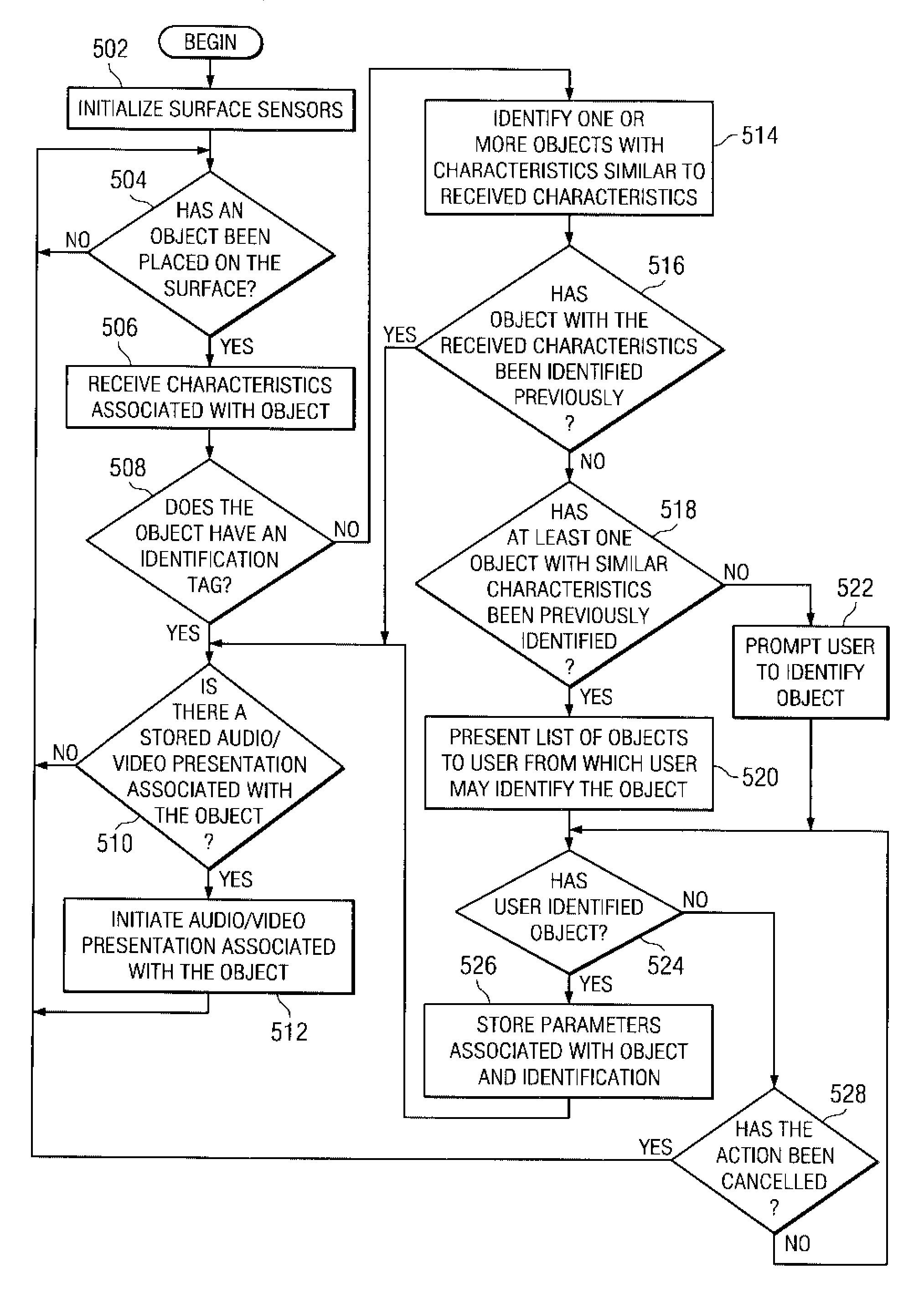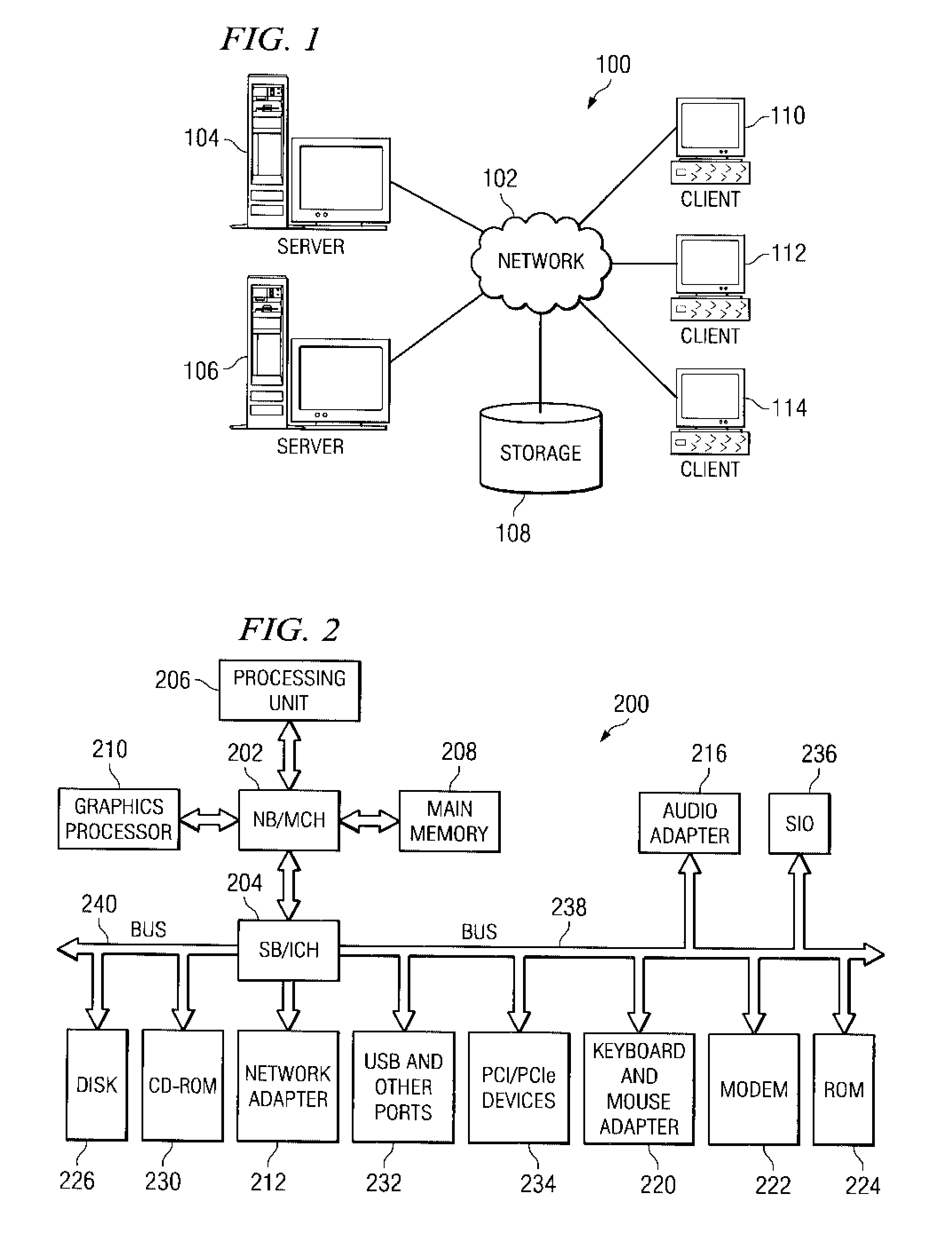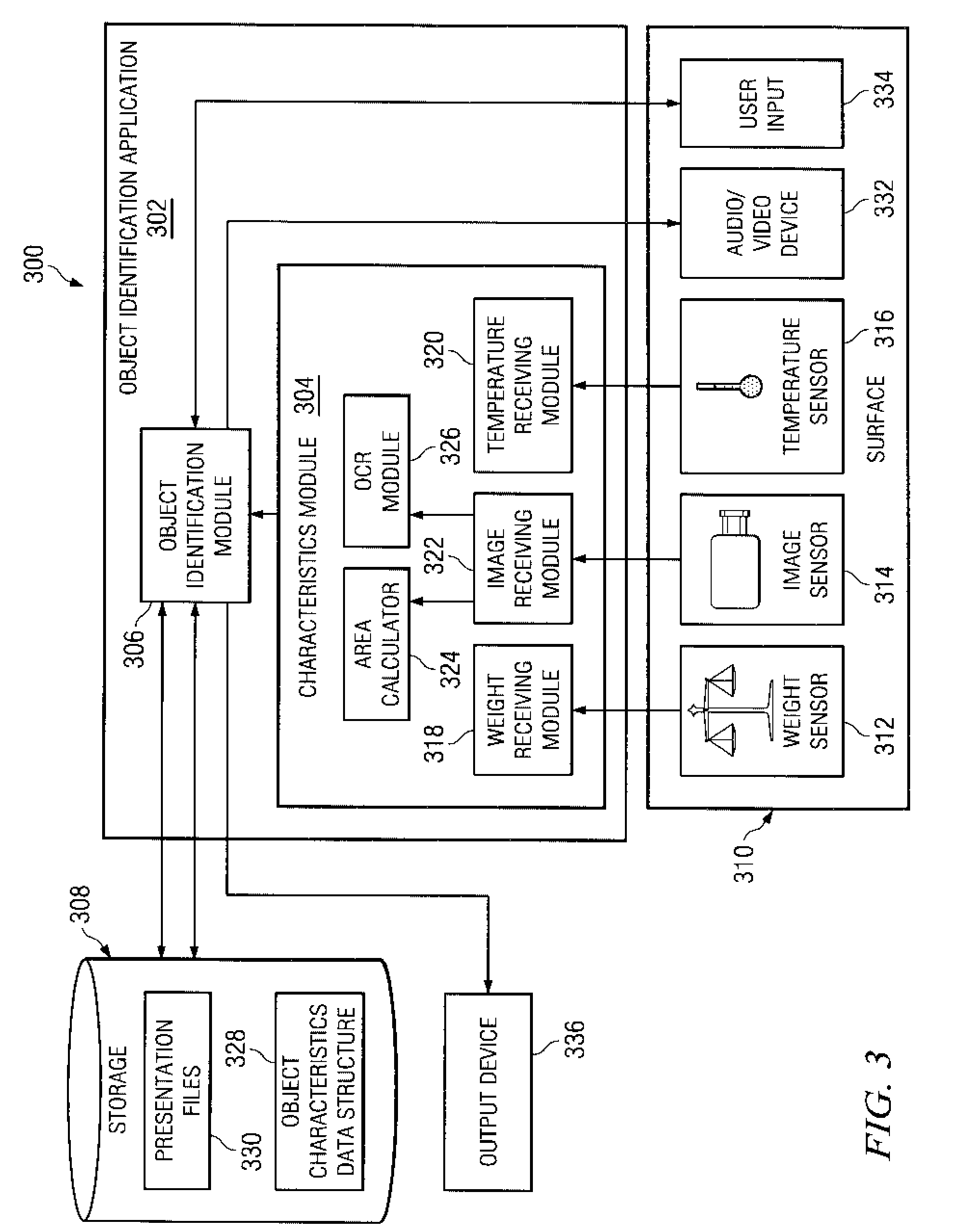System and method to use sensors to identify objects placed on a surface
a technology of sensors and objects, applied in the field of data processing systems and methods, can solve the problem that the scale has no means of identifying objects
- Summary
- Abstract
- Description
- Claims
- Application Information
AI Technical Summary
Benefits of technology
Problems solved by technology
Method used
Image
Examples
Embodiment Construction
[0018]The illustrative embodiments provide mechanisms for identifying an object without an identification tag that is placed on a surface by using sensors that identify characteristics associated with the object. As such, the mechanisms of the illustrative embodiments are especially well suited for implementation within a stand alone data processing device or a distributed data processing environment and within, or in association with, data processing devices, such as servers, client devices, and the like. While the mechanisms of the illustrative embodiments may be implemented in a stand alone device or a distributed data processing environment, the following description is directed to the distributed data processing environment for illustration purposes. In order to provide a context for the description of the mechanisms of the illustrative embodiments, FIGS. 1-2 are provided hereafter as examples of a distributed data processing system, or environment, and a data processing device...
PUM
 Login to View More
Login to View More Abstract
Description
Claims
Application Information
 Login to View More
Login to View More - R&D
- Intellectual Property
- Life Sciences
- Materials
- Tech Scout
- Unparalleled Data Quality
- Higher Quality Content
- 60% Fewer Hallucinations
Browse by: Latest US Patents, China's latest patents, Technical Efficacy Thesaurus, Application Domain, Technology Topic, Popular Technical Reports.
© 2025 PatSnap. All rights reserved.Legal|Privacy policy|Modern Slavery Act Transparency Statement|Sitemap|About US| Contact US: help@patsnap.com



